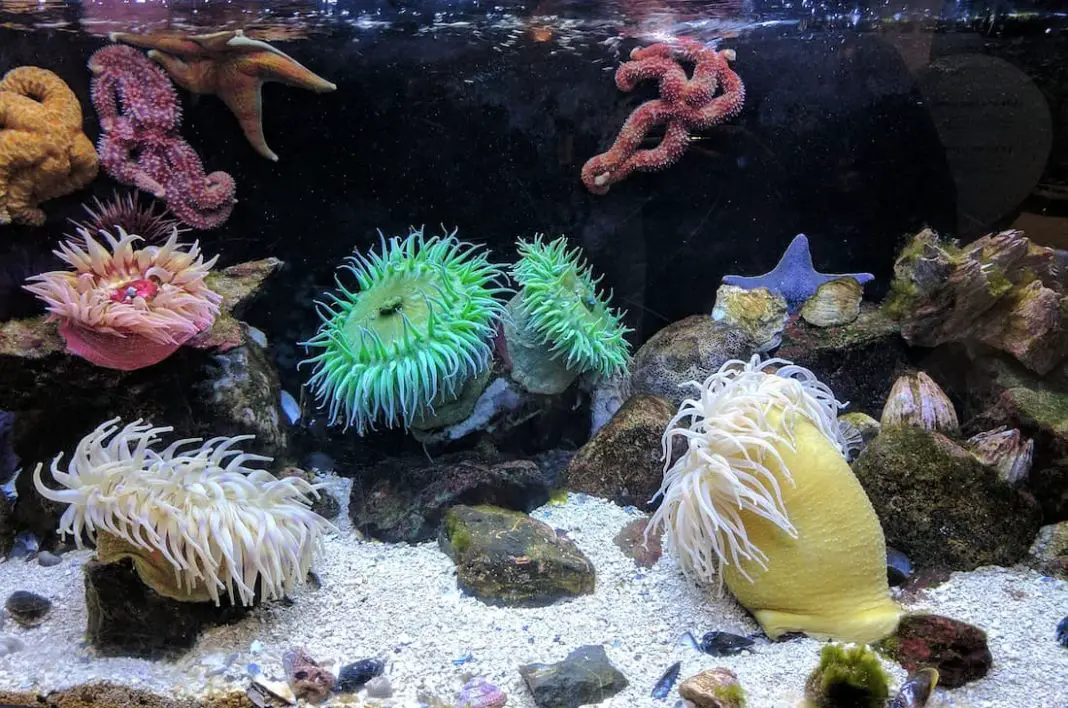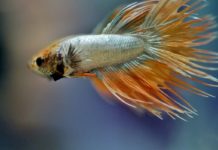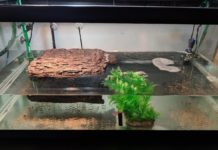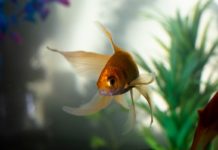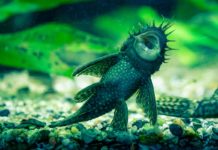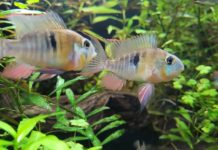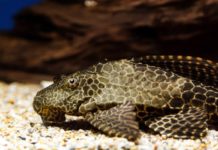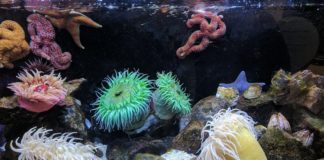Contents
- Copepod Eating Fish
- Preventing Copepods In The Aquarium
- Dealing with Copepods In A Saltwater tank
- Can Clownfish Rely Solely on Copepods?
- How Do You Eliminate Copepods?
- What Else You Need to Know About Copepods
Copepod Eating Fish
Breeders use copepods as a food source for hatching and rearing gobies, seahorses, and octopus. There are even some fish that rely on these types of bugs as primary food, such as mandarinfish, picturesque dragonet, sand sifting gobies, and sleeper gobies.
There are quite a few species that actively pick at live rock and sift the substrate in search of copepods, which can help to naturally control your tanks copepod population.
Fish That Eat Copepods:
- Midas blenny
- Adult seahorses
- Firefishes
- Clownfish
- Most angel, butterfly, hawk, and wrasse fish species
Invertebrates That Feed On Copepods:
- Shrimp
- True crabs
- Hermit crabs
Most of the saltwater fish that strictly require creatures like the copepod for food can be quite challenging to keep. These fish require a well-established aquarium with a consistently high copepod population. With an insufficient food population of copepods, they may starve.
Preventing Copepods In The Aquarium
You can notably reduce the chance of getting copepods into your aquarium by properly quarantining or bleach dipping everything that’s been in a tank with them before putting it into your own tank. When dealing with items such as decoration, hardscape, or substrate, you can leave it outside of water for a while, making sure that it’s completely dry before putting it in the tank.
There’re two recommended ways to for removing copepods that have potentially clung onto new plants and repurposed items going into your aquarium:
- Quarantine: this process is important for reducing copepods, getting into your tank, and keeping new plants in a separate fish-free tank or container than the one they’ll be going in is important.
- Bleach Dip: This is arguably the best way to disinfect any plants or repurposed decor before placing them in your tank.
Dealing with Copepods In A Saltwater tank
Using Clownfish
Copepods automatically make a viable source of food for clownfish. The consensus is that a clownfish can eat copepods. Though, their efficacy as a food source can vary with each aquarist. There are some aquarists that argue that, even though a clownfish can eat them, there’s an insufficient meal, incapable of satisfying clownfish because of the copepod’s small size.
However, others may tell you that their clownfish have a diet that consists primarily of copepods. Ultimately, you may need to supervise a clownfish to find out whether or not they’ll survive mostly on copepods.
As they’re a free and mostly harmless meal for most fish. Therefore, if you’ve already considered getting a clownfish for your tank, then you may have little to lose by experimenting with clownfish and waiting to see how well they’ll feed on copepods. If the copepods aren’t cutting it, the clownfish will quickly let you know.
However, if your clownfish develops a taste for copepods, you should celebrate it as copepods could solve your tank’s food issues. For many aquarists, copepods are considered superior to commercial flakes and pellets. They have the necessary nutritional content required to keep clownfish fed.
Can Clownfish Rely Solely on Copepods?
As mentioned earlier, there are situations where a clownfish can rely solely on copepods. However, identifying that case can pose a challenge. That’s because clownfish can’t tell you if they’re full, nor will they show any distinctive behavior.
Still, there’re a few clues you can look out for. If notice your clownfish nibbling on the copepods in your tank, try adding a few pellets, then observe their new eating habits. If the clownfish are spitting out the flakes frequently, it could be a sign that the copepods are sufficient.
You can also look for other clues in your aquarium. When you’re feeding your clownfish too much food, debris will begin to accumulate. You’ll notice that your filter becomes dirty and that there are vast amounts of sunk food at the bottom of the tank.
How Do You Eliminate Copepods?
Although copepods are harmless, and generally their presence in a tank shouldn’t worry tank owners, however, some people don’t like them. Copepods can become a source of irritation for fish in your aquarium, especially if they are growing to such large numbers that they begin crawling incessantly across the bodies of the fish.
The behavior of your fish can tell you if they’ve had enough. If they keep shuddering, you can assume that they’re not that amused with the tinkling sensation the presence of the copepods produces. If may notice that your fish are getting exhausted as they cannot shake the copepods.
If you don’t have a fish that is dealing with copepods, you can introduce a species that eats copepods. This will either eliminate them or reduce their population to a more manageable number. If you don’t want new fish in your tank, you can buy a canister filter (hang-on type) with a fine micron sleeve, which is useful for filtering out copepods.
However, using a filter is a permanent solution for dealing with copepods. Fish that eat copepod is a natural alternative. You should use a method that suits your tastes and fits your situation. Either way, by using either of these methods, the number of copepods should decrease significantly.
What Else You Need to Know About Copepods
Although some people will say that copepods are entirely harmless, it isn’t entirely true. There are so many species of copepods, roughly 11,500 and those are just the species that have been discovered so far.
Of the known copepod species, one-third are parasitic, and these could pose a threat to fish.
Conclusion
Although copepods can be pests if blooms happen within an aquarium, a small population of copepods generally indicates a healthy aquarium for your fish. Not only do they work as cleaning staff, but they also serve as food for your fish.
Keeping the population of copepods under control is beneficial but, when things go wrong, you can get rid of copepods in the fish tank by following the above steps.

